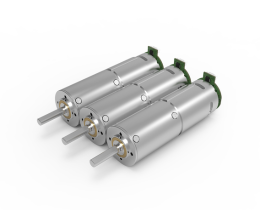Why Your Next Project Needs a 24V Planetary Gear Motor (and What You’re Missing Out On)
Picture this: You’re halfway through a project that demands precision, durability, and raw power. The clock’s ticking, and your current setup just… isn’t cutting it. Maybe the motor overheats. Maybe it’s louder than a blender full of rocks. Or maybe it’s simply not built to handle the torque you need. Sound familiar? Let’s talk about why a 24V planetary gear motor might be the quiet hero your workbench has been begging for.
.webp)
First off, let’s break down the “planetary” part. Unlike traditional gear systems, this design stacks multiple gears around a central “sun” gear. Think of it like a tiny solar system inside your motor—compact, efficient, and way tougher than it looks. One user put it bluntly: “I didn’t think something this small could handle industrial loads. Then I saw it outlast my old motor by three months.”
Q: Why 24V?
Glad you asked. Higher voltage often means better efficiency, right? But 24V strikes a sweet spot: enough juice to power heavy-duty applications without the energy drain (or safety risks) of higher voltages. It’s like having a sprinter’s speed with a marathon runner’s stamina.
Now, let’s get real about noise. Ever tried concentrating while a motor whines like a mosquito in your ear? Planetary gear systems distribute load evenly, reducing friction—and the racket that comes with it. One customer joked, “I actually forgot it was running. My dog stopped giving me the side-eye.”
Durability’s another win. These motors are built to shrug off wear and tear. The gears mesh smoothly, minimizing heat buildup. Translation: fewer breakdowns, fewer headaches. A robotics hobbyist once told me, “I’ve dropped mine, soaked it, even accidentally kicked it across the workshop. Still runs like day one.”
But here’s the kicker: versatility. Whether you’re automating a warehouse conveyor, fine-tuning medical equipment, or even prototyping a custom EV, a 24V planetary gear motor adapts. It’s not a one-trick pony. One engineer shared, “We used the same motor model for a solar panel tracker and a compact crane. Both worked flawlessly.”
KPOWER’s take? They’ve spent years refining these motors to balance raw power with finesse. No flashy gimmicks—just components that work harder so you don’t have to. As one longtime client put it, “It’s like they read my specs before I even sent them.”
Still on the fence? Consider this: A well-designed motor doesn’t just do the job. It elevates it. Less downtime, lower maintenance costs, and a footprint small enough to fit where others can’t. So, next time your project hits a snag, ask yourself: Is your motor working for you—or against you?
Sometimes, the right tool isn’t just about power. It’s about smart engineering that stays quiet, lasts longer, and bends to your needs. And honestly, isn’t that what we’re all looking for?


































.webp)

